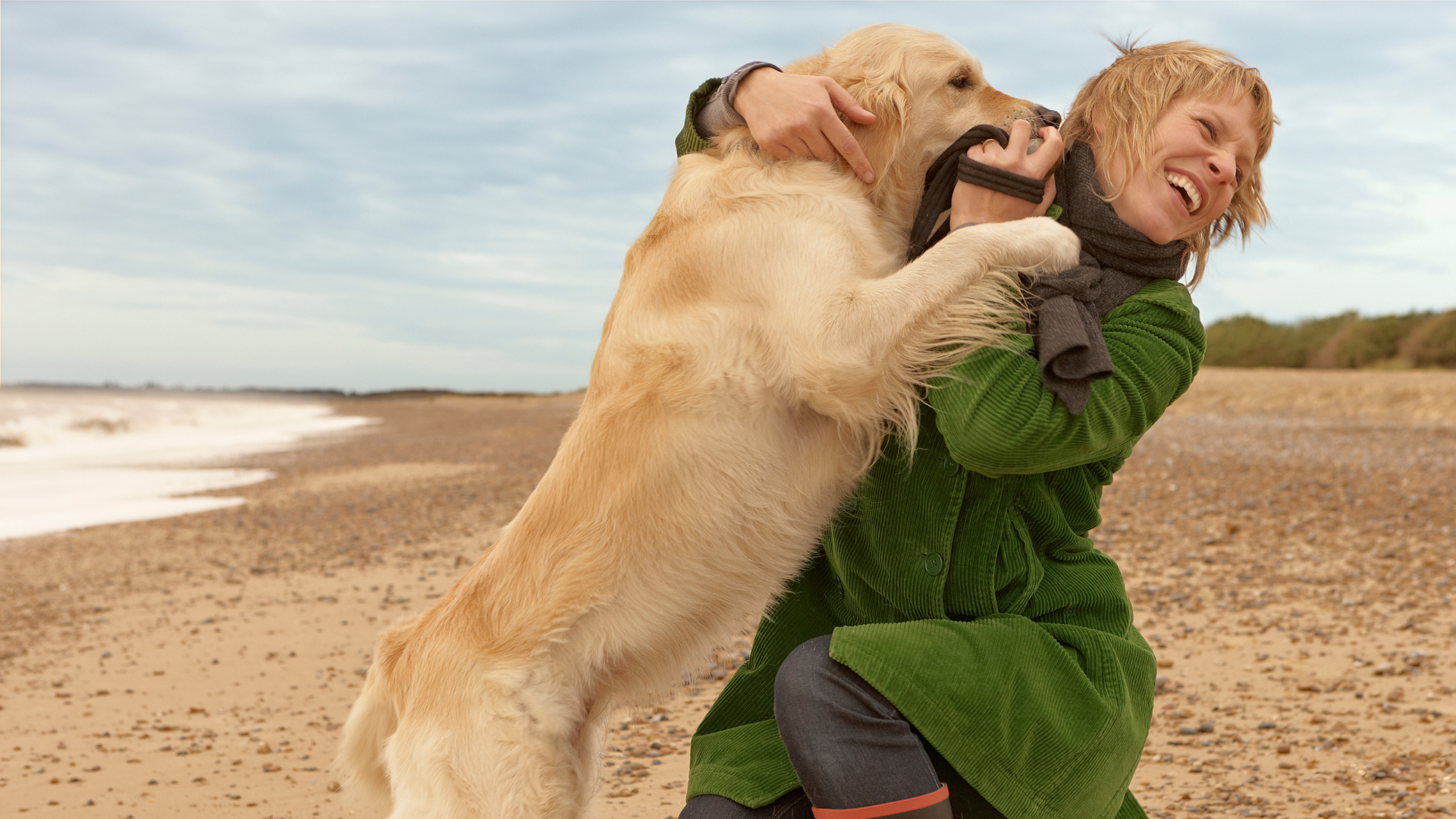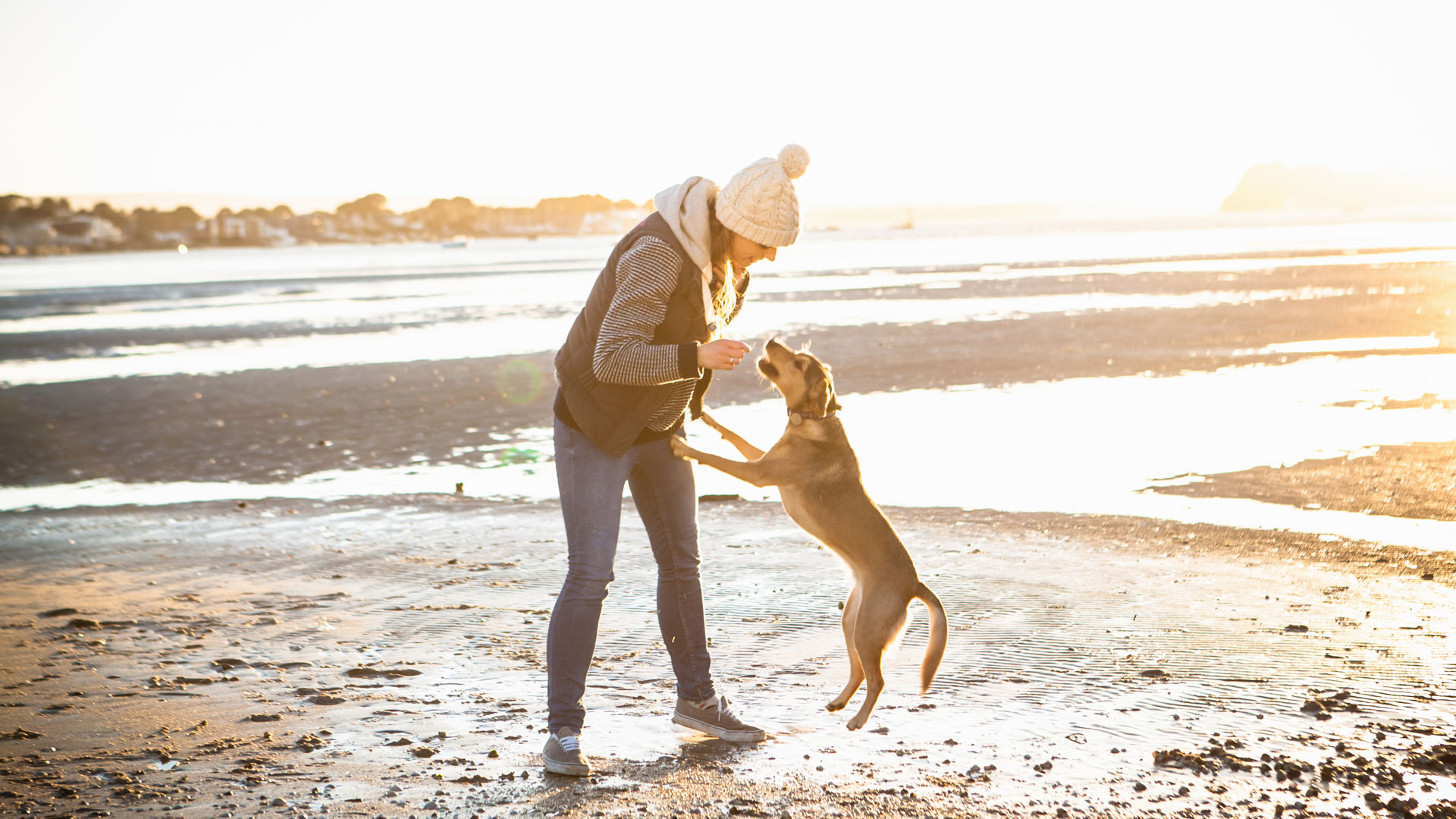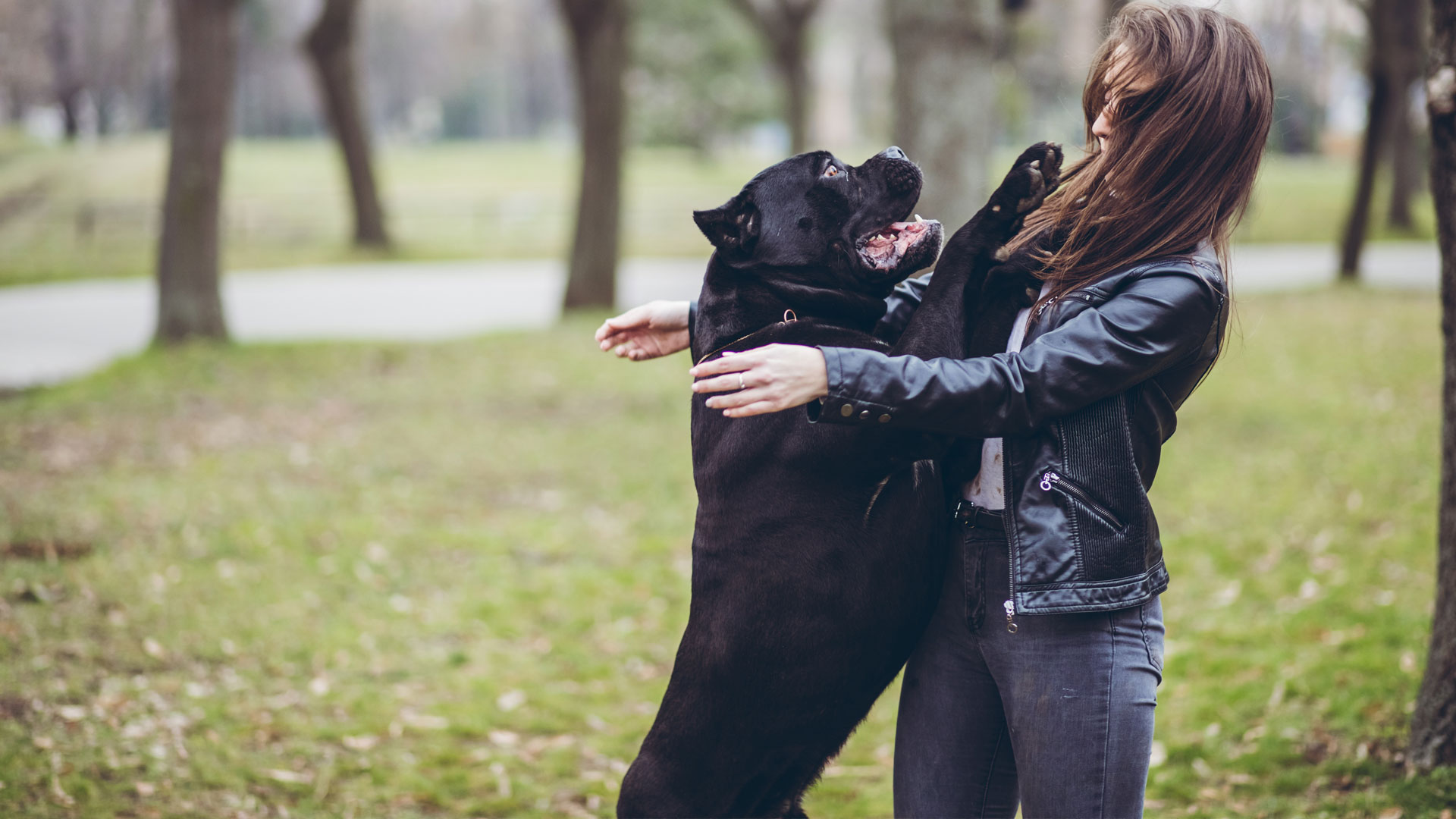
If you’re a pup parent, then you might be wondering how to stop a dog from jumping up. Whilst this behavior might seem cute in the early days, it can turn into a real problem as they get older and bigger — especially if you have small children around the house.
Even though your dog means well, this behavior can feel quite frustrating. Thankfully, there are lots of things that you can do to help, like redirecting them to one of the best puppy toys or rewarding them for staying down. You should train them out of this bad habit as soon as possible using positive reinforcement for dogs.
Below, we’ve asked Lara Sorisi, an expert dog trainer, for her advice on how to stop a dog from jumping up. She’s also revealed why they like to do this, and whether it’s even a bad thing. Keep on reading to find out:
4 tips for how to stop a dog jumping up
As with most behaviors, there can be multiple explanations for why a dog jumps up. Lara Sorisi is an APDT-certified dog trainer and a championship dog trainer. She says, “The main thing that owners need to figure out is why their dog is jumping up. The majority of the time, they simply want your attention. There are actually three types of attention that you could give your dog; eye contact, verbal contact, and physical contact.
“If your dog jumps up at you and you even just look at them, you’re actually giving them the attention they desire right then. Meanwhile, if your dog jumps up at you and you talk to them – even if it’s in a positive or negative way – you’ve still given them attention. And again, even if you push your dog off when they jump up, you’re still giving them that physical contact and attention that they’re looking for – and you’ve reinforced the behavior and made them more likely to do it next time.”

1. Ignore the behavior
When your dog jumps up, do you push them off? Do you exclaim loudly in frustration? Or perhaps you even give in and give your dog a guilty cuddle (don’t worry, we’ve all done it!). If you do these things, you may have been inadvertently rewarding your dog for its behavior. Instead, you want to be as neutral and unexciting as possible. Eventually, your dog will get bored and get down. When they do, make sure to mark and reward for maximum benefit (keeping a bag of treats in your pocket is a good tactic to make sure they’re always on hand!).
Lara adds, “If you’re in a household, the best thing you can do is ignore your dog completely. Simply turn away – if they continue to jump up, then leave the room. This will be the complete opposite of the dog’s desired effect and you’ve taken away the thing that they want – your attention. If you continue to do this consistently and you don’t give them any eye contact, verbal contact, or physical contact, then the behavior will dissipate quite quickly.”
2. Put a cue on your interactions
Just like humans, every dog is different. While some dogs might immediately pick up the correct behavior that you’re looking for, others might struggle to contain their excitement. Lara advises, “If you’ve got a really bouncy and excitable dog, you’ll need to put a start cue and a finish cue on the behavior. So, every time you interact with the dog, put them into a Sit or a Down. Don’t interact with them until they’re in this position. Then, you can give them attention. When you’re done, give the dog a clear indication that the interaction is over with a ‘Finish’ cue.
“Instead of the dog jumping up every single time, they’ll start automatically going into the Sit or Down position that you’ve instilled. This is called a redirection technique and is a really great proactive way to anticipate what your dog will do and give them an appropriate alternative instead.”

3. Reward for four paws on the floor
Generally, we want to be telling our dogs ‘yes’, rather than ‘no’. So, rather than getting frustrated with our dogs for jumping up, reward your dog with one of the best dog treats whenever they have all four paws on the floor. It’s worth noting that this is definitely a long-term strategy that won’t have an immediate effect, but over time your dog will start to notice that they’re only rewarded when they’re not jumping up.
4. Teach other humans too
As many owners already know, it’s often not just a case of training the dog – you need to train the humans that interact with it too. For these techniques to be most effective, you’ll need to ensure that everyone that encounters your dog is consistent. Otherwise, it’ll take much longer for your dog to learn that jumping up isn’t acceptable.
Lara says, “There’s also an opportunity to do some more redirection training here. I recommend leaving a pot of treats near the front door so that you can teach your dog to go to its bed when someone comes through the door. To train this behavior, every time guests come in and out of the house, they need to grab a treat from the pot and put the dog on its bed, give them the food and then walk in. This means that they’re not actually interacting with the dog, because they’re redirecting them into a settled behavior.”
However, if you find that your guests don’t quite follow your instructions, then you may have to resort to management techniques instead. Lara says, “This is a really difficult scenario, because a guest stroking your dog when it’s jumping up will go against your training and reinforce the jumping-up behavior. The best thing you can do is pop your dog into its harness and lead so that there’s a physical restriction in place.”
Why do dogs jump up?
No matter why a dog jumps up, there are plenty of great ways to train this habit out of them. We will only be covering positive reinforcement training in this article – and we would advise readers to be wary of any advice that includes aversive tools or methods. While you may initially get what seems to be good results, aversive training can have massively negative effects on your dog in the long run – even if they seem fine at the time.
Lara says, “There will normally be a knock-on effect from aversive training somewhere. If the dog is being punished for jumping up, it could transition into something like reactivity, or anxiety-based and unwanted behaviors. It could really make the situation a lot worse because the dog will be anticipating the punishment. Force can initially provide what looks like instant results, but it will most likely create more long-term problems.
“I recommend looking for trainers and behaviorists that are certified by APDT and other similar organizations, as we work to a code of conduct and only use force-free methods that are backed by science.”
Is it actually bad if dogs jump up?
This training is all very well and good, but what if you don’t mind your dog jumping up? We asked Lara whether it can actually be okay to let your dog jump up in some circumstances.
“Not really. Dogs aren’t able to understand that they can jump up at one person, but not someone else. As a general rule of thumb, you need to be consistent. However, there are times when you will need your dog to put their paws on something or jump up onto something – such as jumping up into the car, putting their feet onto scales, or foot-targeting training.
“I teach all of my clients the ‘Paws on’ cue, which means that the dog understands how to put their paws on something and that they need permission to put their paws onto something. This also charges up the ‘Off’ cue, so if your dog does put their paws on a counter, a person, a sofa, etc. without your permission, you will have an easier time telling them ‘Off’ if that training has been implemented.”
Looking for other ways to train your dog? See what happened when we tried a 45-minute 'sniffari'. You might also want to learn how to calm down a hyper dog.







